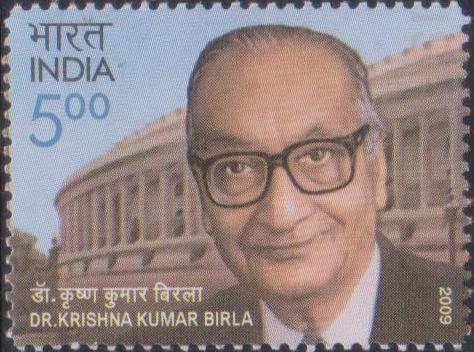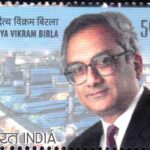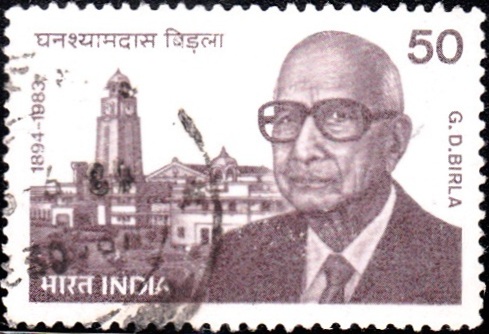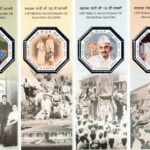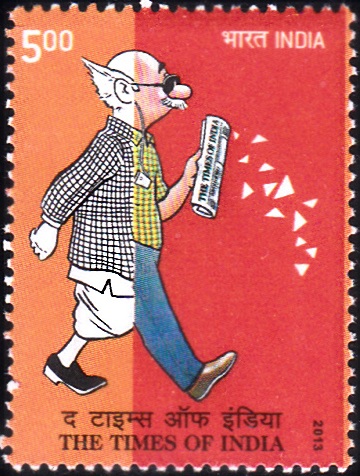
Hindustan Times 2024
A commemorative postage stamp on the 100 years of The Hindustan Times (1924-2024) :
 Issued by India
Issued by India
Issued on Nov 16, 2024
Issued for : The Department of Posts is proud to release a commemorative postage stamp celebrating 100 years of The Hindustan Times. Over the past century, The Hindustan Times has steadfastly upheld its role as a significant voice in national discourse. Reflecting the vision of its founders, the newspaper has navigated a century of change while remaining true to the principles of integrity and commitment that have guided it from its inception. This commemorative stamp honors the newspaper’s enduring legacy and its contribution to shaping India’s media landscape.
Credits :
Stamp/FDC/Brochure/Cancellation Cachet : Ms Nenu Gupta
Type : Stamp, Mint Condition
Colour : Multi Colour
Denomination : 500 Paise
Stamps Printed : 3,03,120
Printing Process : Wet Offset
Printer : Security Printing Press, Hyderabad
About :
- The Hindustan Times has been a significant force in Indian journalism and public life for 100 years, evolving from its origins in the freedom struggle to become a leading voice in contemporary media. Launched on September 15, 1924, the newspaper’s inception was closely tied to India’s anti-colonial and social reform movements. Amidst the political turbulence of early 20th-century India, the Gurudwara Reform Movement aimed to remove corrupt priests loyal to the British, leading to peaceful protests by the Akalis which were violently suppressed. In response, a group of Akalis including Sunder Singh Lyallpuri, Tej Singh Samundri and Sardar Mangal Singh saw the need for a newspaper to amplify their message.
- Mahatma Gandhi inaugurated The Hindustan Times and selected K.M. Panikkar as its editor. Gandhi’s advice to Panikkar emphasized the importance of honesty and transparency, a principle that remains a cornerstone of the newspaper’s ethos. The early years were challenging, with the paper struggling financially. Pandit Madan Mohan Malaviya provided crucial support by borrowing Rs 40,000 from Punjab National Bank, chaired by Lala Lajpat Rai to cover debts. By 1927, the newspaper was restructured into a limited liability company with Pandit Madan Mohan Malaviya on the board and Ghanshyam Das Birla, a key supporter of Gandhi, as a major shareholder.
- By 1930, The Hindustan Times had made significant strides with a circulation of nearly 30,000 copies reaching readers across Punjab, Uttar Pradesh and Rajasthan. However, the colonial government imposed strict press laws, often penalizing newspapers for their content. During the Quit India movement in August 1942, The Hindustan Times voluntarily ceased operations for four months in protest against these restrictions.
- The newspaper was not only a nationalist platform but also a voice for an emerging nation. It launched its Hindi sister publication, Hindustan, in 1936, broadening its impact. The newspaper featured writings by eminent figures such as Motilal Nehru, Maulana Mohammed Ali and Jawaharlal Nehru in its first issue. Over time, it published influential works, including Gandhi’s autobiography, My Experiments With Truth and contributions from international figures like Eleanor Roosevelt and Dr. Martin Luther King Jr. The Hindustan Times was also known for its distinguished journalists including cartoonist K. Shankar Pillai, reporter Durga Das and editor Pothan Joseph. Devdas Gandhi, Mahatma Gandhi’s third son served as managing editor from 1937 to 1957, contributing significantly to the newspaper’s development.
- Following India’s independence in 1947, The Hindustan Times faced the task of navigating a new and complex political landscape. The violence of Partition and the assassination of Gandhi were profound challenges. Despite these difficulties, the newspaper remained committed to supporting and shaping the nation. It played a role in nation-building, raising funds for soldiers, reporting on the lives of ordinary Indians and pioneering pictorial storytelling through photojournalism. Its editorials were candid and critical, reflecting the concerns of a young Republic.
- Under the guidance of the Birla family, the newspaper continued to adapt and grow. Krishna Kumar Birla who succeeded his father G.D. Birla in 1957, expanded the newspaper’s reach and launched new publications such as the tabloid “Morning Echo”, the children’s magazine “Nandan” and the literary magazine “Kadambini” in Hindi. Despite these expansions, the focus on nationalism remained central to The Hindustan Times.
- In the late 20th and early 21st centuries, The Hindustan Times embraced modernity with Shobhana Bhartia, Krishna Kumar Birla’s daughter, leading the newspaper into the digital age. Under her leadership, the newspaper launched new city editions, invested in its online presence and introduced lifestyle products like “HT Brunch” and “HT City”. The Hindustan Times also initiated the Hindustan Times Leadership Summit (HTLS) in 2003, an annual event that gathers global leaders and thinkers to discuss important issues.
- Text : Referenced from content provided by the proponent.


